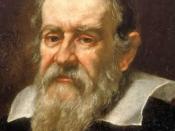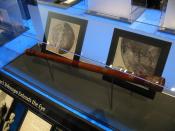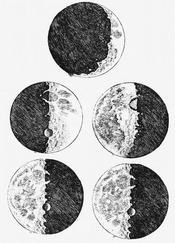The old theory of the Universe, the Ptolemaic system, had the earth at the center of a universe made up of concentric spheres within spheres that held the moon, sun, planets and stars. To explain the observable, non-circular patterns (retrograde motion) of inner planets, Ptolemaic thinkers had to make many clumsy adjustments in their systems. The planets had to follow a small circle (epicycle) around a larger circle (deferent). Ptolemy used the spherical model because of the Aristotelian ideal of circles being the perfect shape.
Nicholas Copernicus, a Polish scholar and priest, studied the motions of the planets and stars. He was also interested in reforming the calendar to provide a more accurate way of determining the date of Easter. He published " The Revolutions of the Heavenly Bodies" in 1543, the year of his death. This postulated the idea of a sun-centered universe, but his hypothesis was not a complete break with the Ptolemaic system since he described the motion of the planets using spheres around the sun.
Copernicus felt that the Ptolemaic system compromised the ideal of perfect spheres too much by having to account for retrograde motion with offsets and spheres within spheres. For the sake of mathematical elegance, Copernicus preferred to place the sun in the center of the universe. His sun-centered system simplified these calculations and eliminated a large number of extraneous spheres by giving a simple geometric reason for the retrograde motion. It was a revolutionary idea at the time to remove the earth from the center of the universe, and an important platform for future thinkers to build on.
Tycho Brahe (1546-1601), a Danish noble, did not embrace the view of Copernicus and spent much of his time making observations to disprove it. Brahe's system was a compromise between Ptolemy and...


